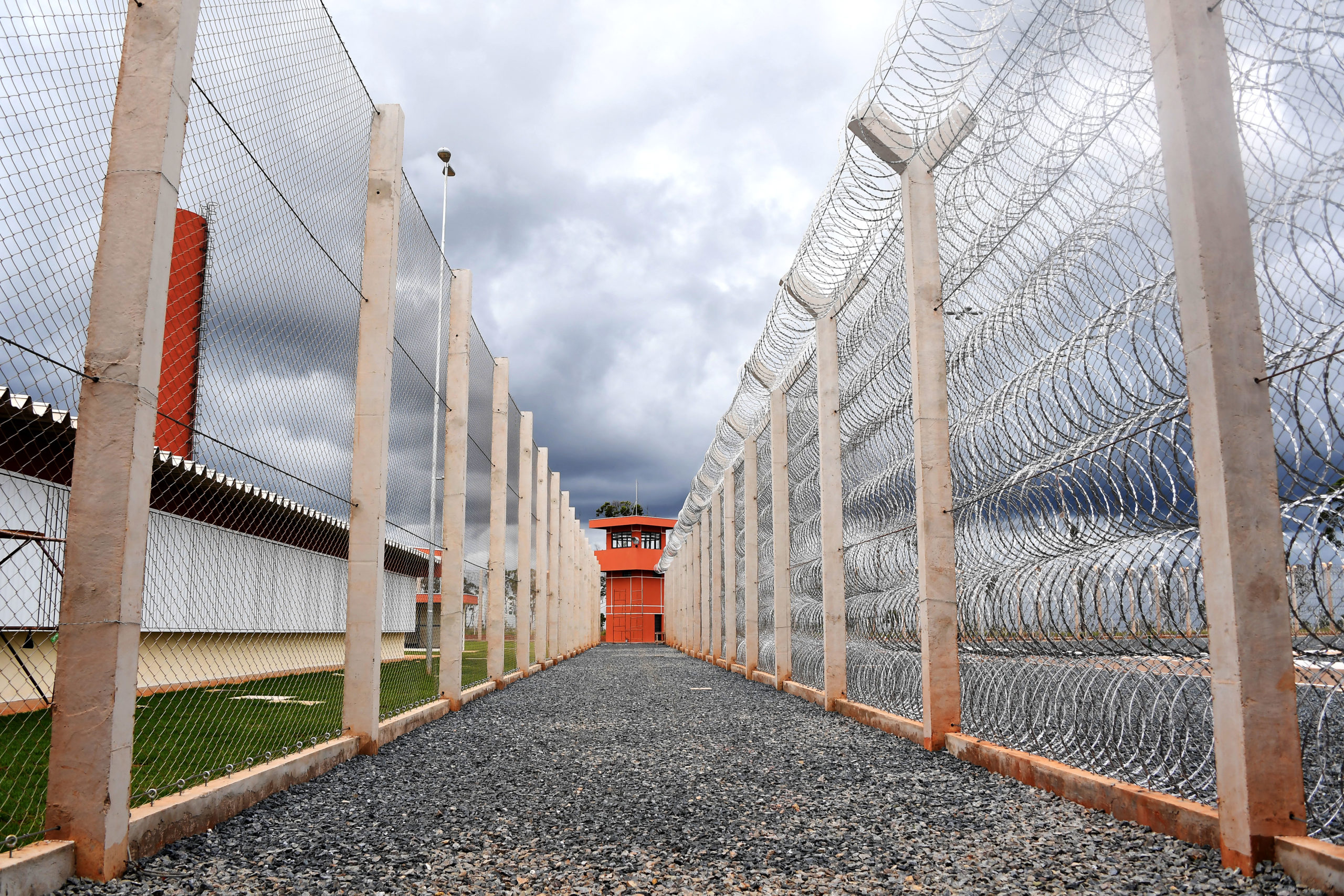6 myths about temporary release of prisoners
Temporary release is provided for by law and is subject to strict rules. In spite of this, a proposed legislation in Congress aims to put an end to this right
 View of the fence and guard tower of the new maximum security Federal Penitentiary of Brasilia, Brazil during a press visit, on December 12, 2017. The penitentiary is scheduled to start operating in March 2018. (Photo by EVARISTO SA / AFP)
View of the fence and guard tower of the new maximum security Federal Penitentiary of Brasilia, Brazil during a press visit, on December 12, 2017. The penitentiary is scheduled to start operating in March 2018. (Photo by EVARISTO SA / AFP)
The temporary release of prisoners, provided for in the Prison Sentence Enforcement Law, is surrounded by myths that heighten the feeling of insecurity in society. It is common to see news about the number of people who do not return to prison, without specifying the percentage to clarify that they represent a minority. There is also the false information that all prisoners are allowed to leave, when in fact there are a series of rules to be observed before the benefit can be granted.
For 10 years, a bill that aims to put an end to this right has been pending in Congress. Recently, the text of Bill 6579/2013 was approved by the Lower House and it is now being analyzed by the Public Security Committee of the Senate. As things currently stand, criminal law allows prisoners to leave up to five times a year for a period of up to seven days to visit family. See below the main myths – and truths – on the topic.
Myth 1: All prisoners have the right to temporary release
Only prisoners in semi-open facilities have the right to temporary release. These are cases of convicted people who sleep inside the prison but already have the right to go outside to work during the day, or who work at the prison. In São Paulo, prisoners in semi-open facilities represent 22% of the total number of detainees, and they generally serve sentences for drug trafficking, robbery and theft. It is important to note that the right is exclusive to people who are already serving sentences in a semi-open facility.
Myth 2: Temporary release is equivalent to a pardon
Temporary release is not a pardon, that is, it does not represent a full pardon of the sentence or a reduction of the time the detainee will spend in prison. It is an authorization to leave prison temporarily to visit family for a predetermined period. After the end of this period, the detainee must return to prison. If they do not, they are considered a fugitive.
Myth 3: They’ve only just been imprisoned and they’re already on temporary release
Prisoners must have served at least one-sixth of their sentence (for first-time offenders) or a quarter (for repeat offenders) and have a history of good conduct to be entitled to leave prison temporarily.
Myth 4: No matter the crime, everyone has the right to temporary release
Prisoners convicted of violent crimes generally receive longer sentences, which affects one of the criteria for entitlement to temporary release. Criminals who have committed a serious offense will only have the right to temporary release following sentence progression and they have been transferred to a semi-open facility. Since 2019, the Prison Sentence Enforcement Law has expressly forbidden the temporary release of prisoners who have committed what are known as ‘heinous crimes’ resulting in death.
Myth 5: Most prisoners do not return after temporary release
In September 2023, 33,700 detainees were granted the benefit of temporary release in São Paulo. Of these, 4% did not return on the specified date, according to a report by the São Paulo Prison Administration Department, and were considered fugitives. They are subject to legal and police action to be recaptured. When they return to the prison system, they will lose their right to semi-open conditions.
Myth 6: Crime increases during the temporary release of prisoners
There is no data to prove that crime increases during the temporary release of prisoners. This belief is based on a preconceived image of incarcerated people.


